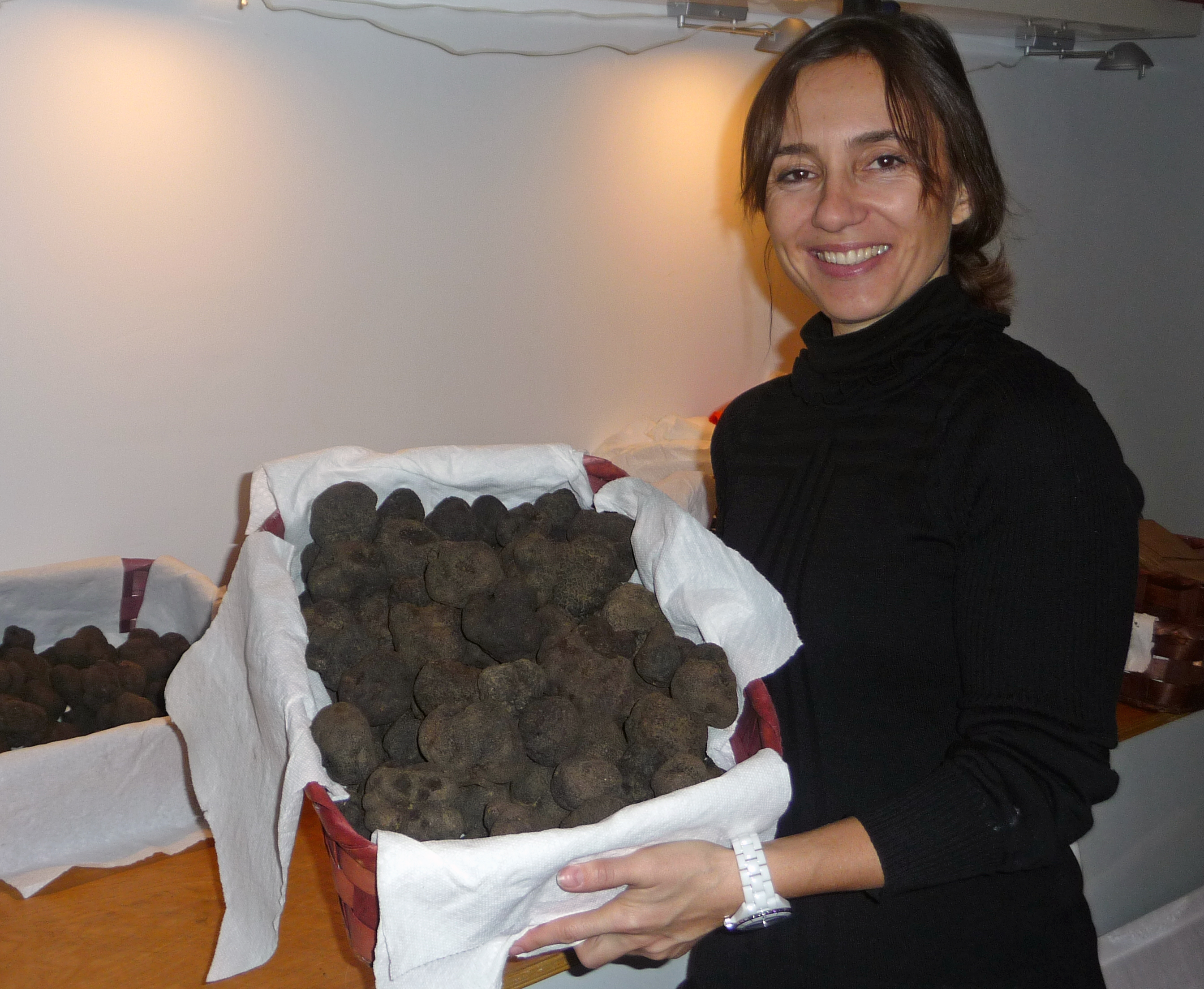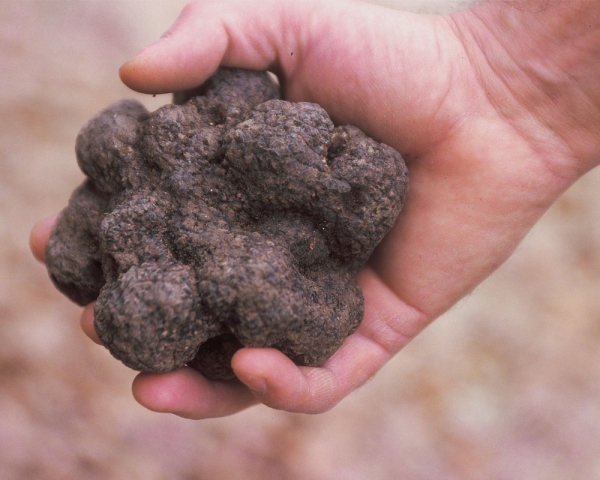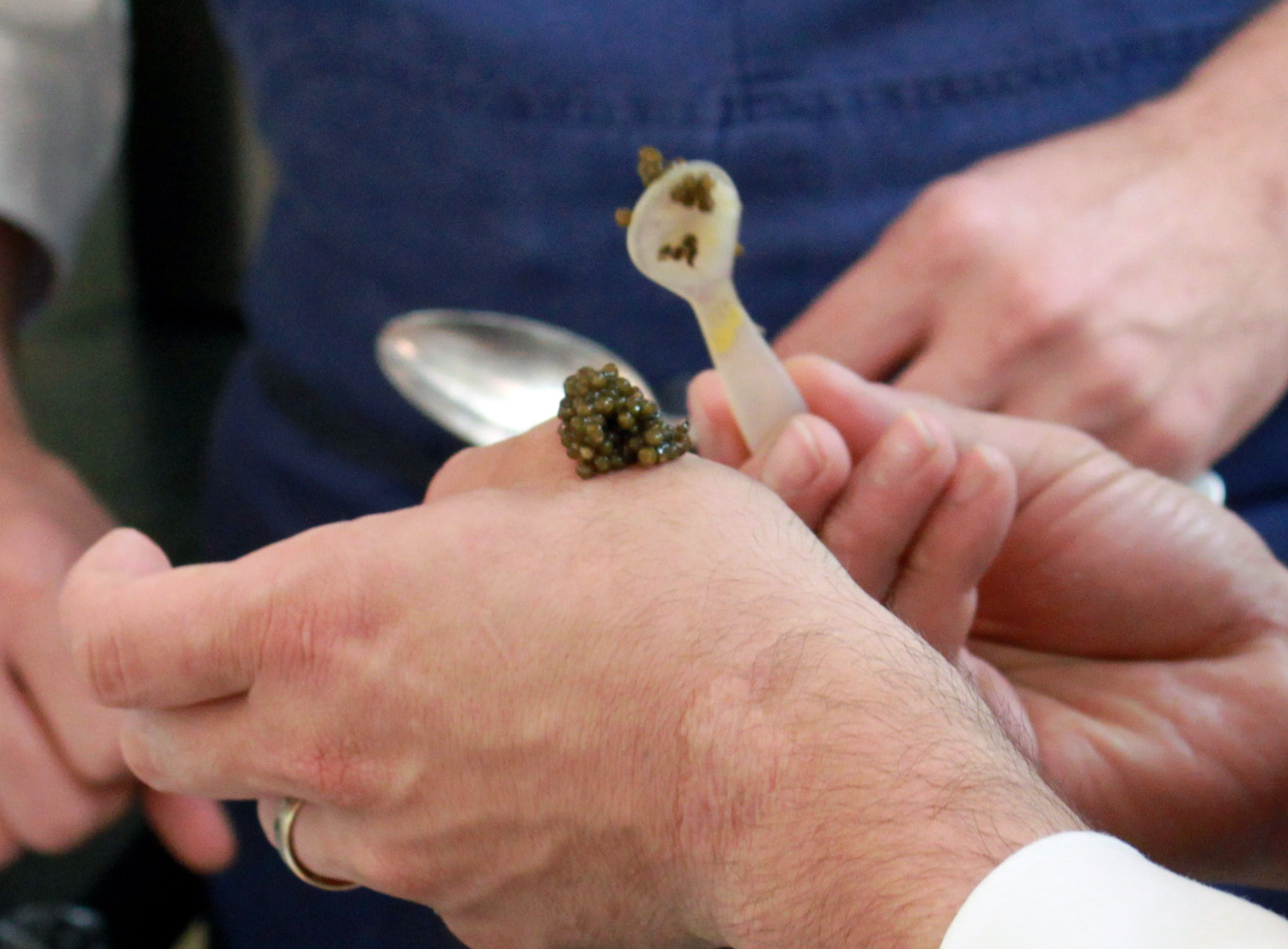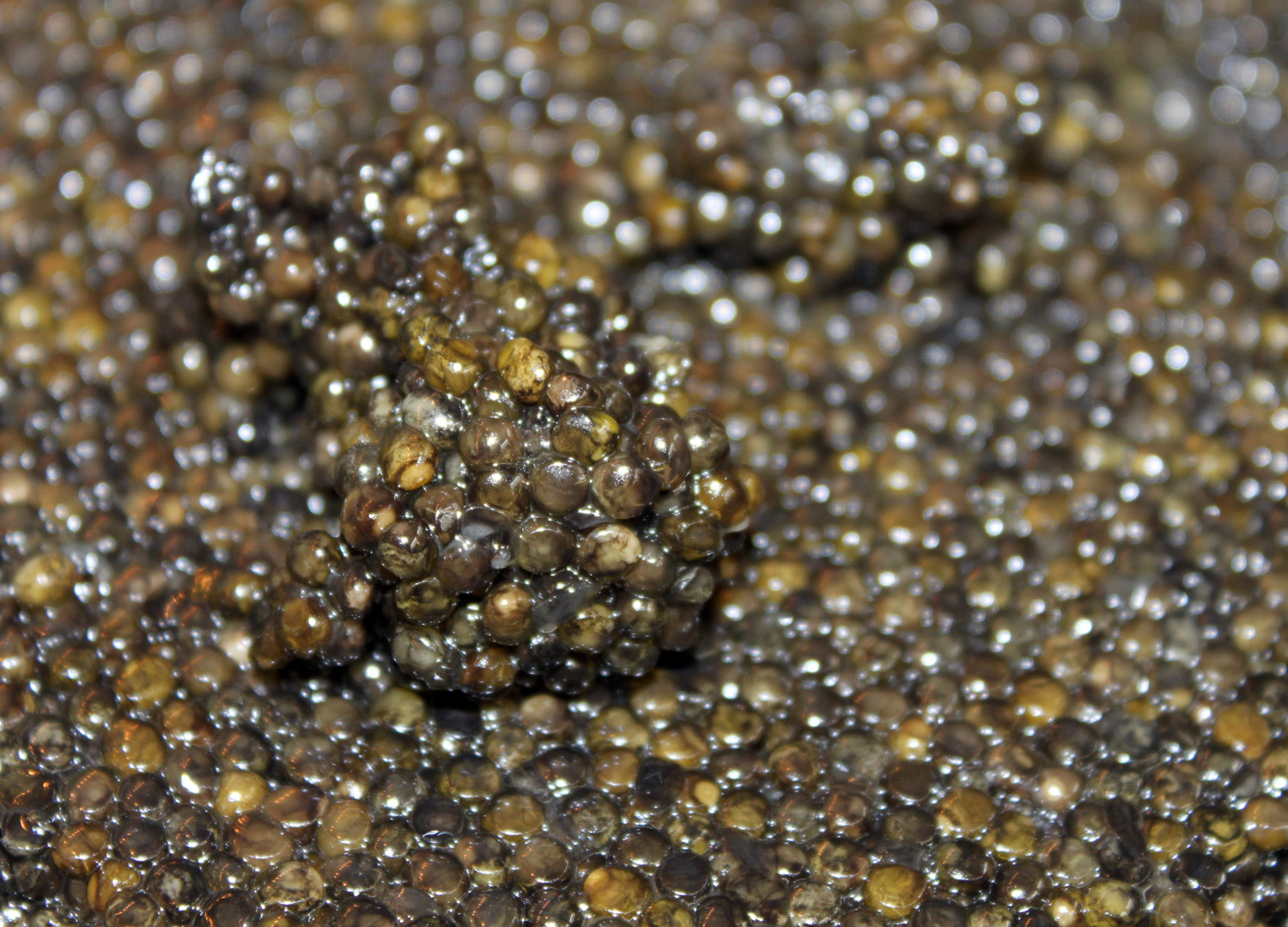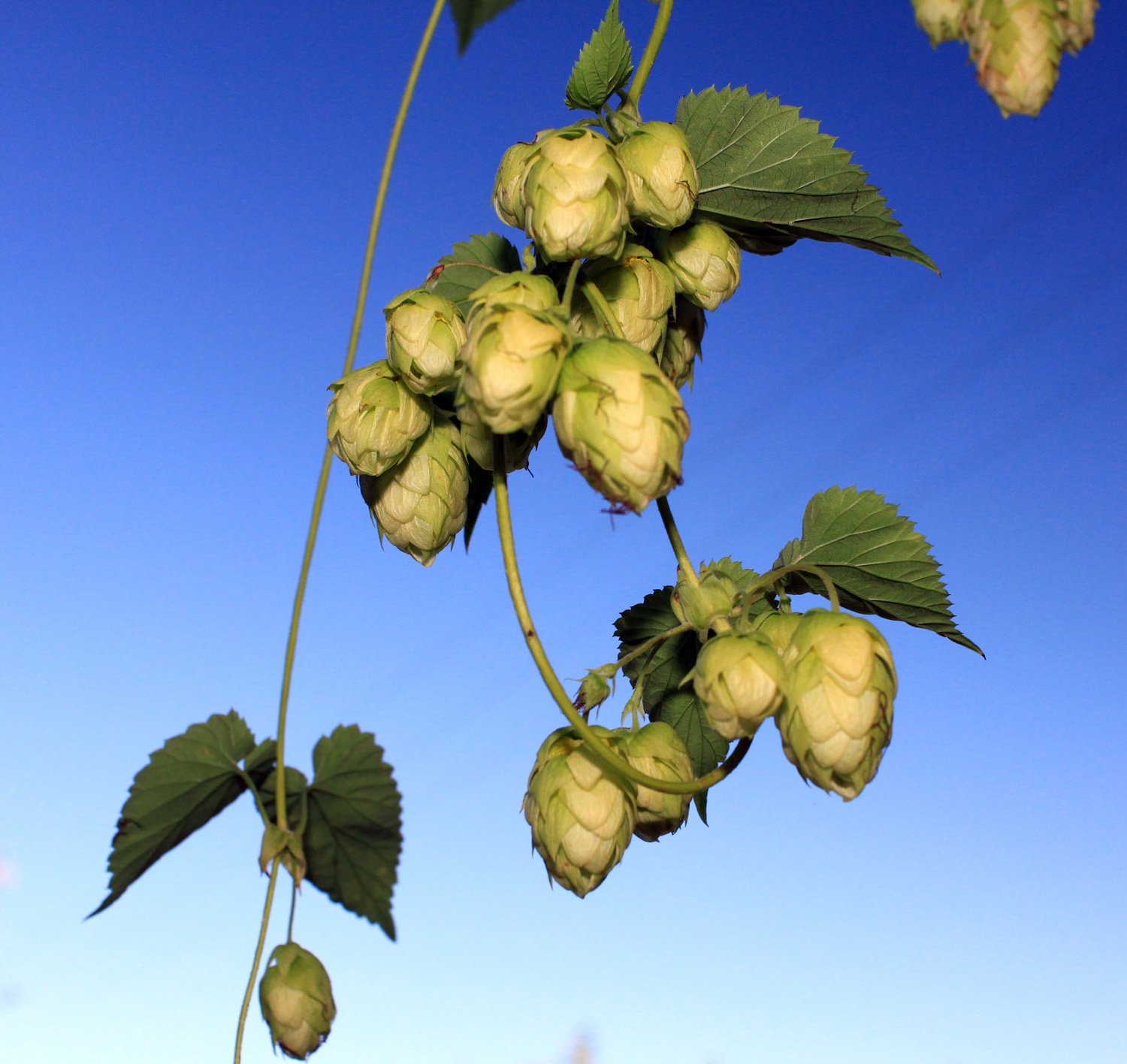 Though most commonly associated with the Périgord region of France, the black truffle – Tuber melanosporum vitt to the more exacting – in fact hails from throughout southern France, western Spain and northern Italy, where it is to be found from December through March. In fact today the production of Périgord accounts for only a small fraction of the total black truffle marketplace, yet this does nothing to dispel the romance of the wondrous ‘black diamond’ of France, undeniably a true gem of the culinary world.
Though most commonly associated with the Périgord region of France, the black truffle – Tuber melanosporum vitt to the more exacting – in fact hails from throughout southern France, western Spain and northern Italy, where it is to be found from December through March. In fact today the production of Périgord accounts for only a small fraction of the total black truffle marketplace, yet this does nothing to dispel the romance of the wondrous ‘black diamond’ of France, undeniably a true gem of the culinary world.
A wise chef once said that there is no way to truly describe the flavor of a truffle – it is something that must be experienced to be understood. That is undeniably true, though one would not be too far off the mark to evoke flavors like mushrooms, garlic, earth and musk. For all the joy its aroma brings to the finest tables, the truffle only seeks to continue its lineage, hoping that its potent scent, meant to attract the amorous attention of wild pigs, will rise through the soil and encourage an animal to spread its spores on welcoming ground.
As commonly stated in food lore, it is for this reason that the earliest recorded truffle hunters made use of pigs to seek the fungus. However it is readily apparent to anyone who has stood face to face with a full-grown pig that to come between it and the food it wants is to invite disaster. So today truffle hunting has evolved to make use of dogs that, while equal in olfactory talent, are easily distracted by a bit of sausage when the coveted treasure is marked.
 Though treated as a prince in the kitchen, the black truffle is in fact a pauper; a parasite that requires a welcoming host and exacting conditions to successfully conclude its life cycle at all. Tuber melanosporum favors oak and hazelnut, spending most of its existence as a near-invisible network of thin filament in the soil, attaching itself to the roots of the tree to draw its vital nutrition. It is only thanks to delicate, and not fully understood factors, that the truffle will produce the fruiting body – an unassuming lump of hard, mottled vegetation that to the uninitiated would appear to have more in common with rough stones than white tablecloths.
Though treated as a prince in the kitchen, the black truffle is in fact a pauper; a parasite that requires a welcoming host and exacting conditions to successfully conclude its life cycle at all. Tuber melanosporum favors oak and hazelnut, spending most of its existence as a near-invisible network of thin filament in the soil, attaching itself to the roots of the tree to draw its vital nutrition. It is only thanks to delicate, and not fully understood factors, that the truffle will produce the fruiting body – an unassuming lump of hard, mottled vegetation that to the uninitiated would appear to have more in common with rough stones than white tablecloths.
Whereas other truffles remain purely wild and maddeningly elusive, the black truffle has succumbed to a measure of domestication. Though all trufficulteurs, or truffle pickers, still enlist the aid of highly trained dogs, many focus their hunting grounds by planting orchards of trees that have been inoculated with the spores of the black truffle. If this strikes any as a cheat, remember that the enterprise requires the care of an inoculated seedling for a full decade before there is any indication of whether or not the tree will bear the desired fruit.
In the field or the orchard, all truffle hunters have the same set of natural aids at their disposal. Truffles are jealous keepers of their trees, secreting an herbicide that will sometimes create a brulée – an unnatural, burned-looking ring around the trunk, devoid of other vegetation. Sharp-eyed hunters may also spot the small species of fly that finds truffles a welcoming home for their larva. Where the flies hover over the ground, they are likely to find their quarry. But it is the truffle hunter’s dog, oftentimes belonging to a lineage that traces back through the years alongside the hunter’s own, which is the most important resource at their disposal.
When the dog identifies a patch of ground that may hold a truffle, the hunter uses a variety of tools to gently turn the earth in search of the prize. Truffles vary widely in size – from a marble to a fist – and as the season progresses they sit deeper and deeper below the surface. When a truffle is unearthed, it is evaluated by the hunter’s trained nose for signs of ripeness or rot and, depending on the analysis, the hunter may either return it to the soil in the hopes that it will foster future harvests or, if the quality is good, they may spend precious hours investigating the soil nearby.
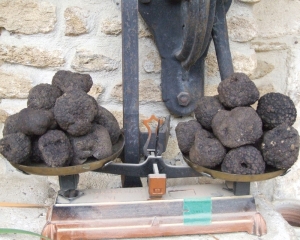 For the successful trufficultur, there are numerous ways that its truffle might journey to the kitchen. Some sell directly to fine restaurants, through relationships of mutual trust that have developed over the course of years. Others bring their truffles to one of the regional markets where they will be consolidated for shipment abroad by brokers. Of course there are some for whom the truffle hunt is a private love, who will simply take them home, wash the earth from them and enjoy the essence of the season with their friends and family.
For the successful trufficultur, there are numerous ways that its truffle might journey to the kitchen. Some sell directly to fine restaurants, through relationships of mutual trust that have developed over the course of years. Others bring their truffles to one of the regional markets where they will be consolidated for shipment abroad by brokers. Of course there are some for whom the truffle hunt is a private love, who will simply take them home, wash the earth from them and enjoy the essence of the season with their friends and family.
In the kitchen, black truffles show another aspect of their nature that marks them as more forgiving than their white cousins. The flavor and aroma of melanosporum will stand up to cooking, expanding the culinary possibilities and making it easier to capture their essence. Though finest when freshly dug from the ground, black truffles also accommodate freezing and preserving, allowing year-round application in the kitchen. Despite this, they are still a unique experience when enjoyed fresh, thinly sliced over a warm and creamy dish. For many, a simple omelet with a generous helping of fresh shaved black truffles is the purest expression of this culinary delight.
images courtesy of Gourmet Attitude



